History of the 12,000-Year-Old Swastika: Origin, Meaning and Symbolism
The swastika is a symbol that was used in the 20th century by of one of the most hated men ever to have lived, a symbol that now represents the slaughter of millions of people and one of the most destructive wars on Earth. But Adolf Hitler was not the first to use this symbol. In fact, swastika origins are far more complex. Before Hitler, it was used as a positive and powerful symbol thousands of years before he ever existed, across many cultures and continents.
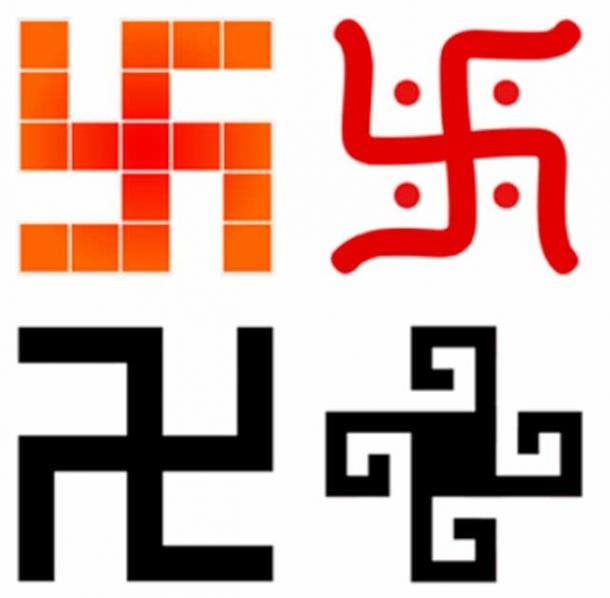
A swastika is a symbol found in many cultures, with different meanings, drawn in different styles. (Mennas Dosbin / CC BY-SA 4.0)
Spiritual Swastika Origins from Around the World
For the Hindus and Buddhists in India and other Asian countries, the swastika was an important symbol for many thousands of years. To this day, the swastika symbol can still be seen in abundance - on temples, buses, taxis, and on the cover of books. It was also used in ancient Greece and Rome, and can be found in the remains of the ancient city of Troy, which existed 4,000 years ago.
- 10 Ancient Symbols You Think You Know the Meaning Of (But You Probably Don’t)
- 7,000-Year-Old Ceramic Fragment with Signs, Symbols and Swastika May Be One of the Oldest Examples of Writing
The ancient Druids and the Celts also used the swastika symbol, reflected in many artifacts that have been discovered. It was used by Nordic tribes, and even early Christians used the swastika as one of their symbols, including the Teutonic Knights, a German medieval military order, which became a purely religious Catholic Order. But why is this symbol so important and why did Adolf Hitler decide to use it?
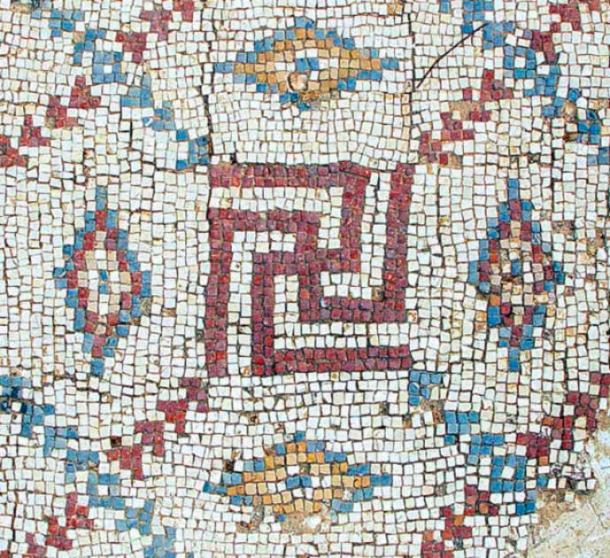
Mosaic swastika in excavated Byzantine church in Shavei Tzion (Israel). (Etan J. Tal / CC BY-SA 3.0)
Positive Days of the Swastika
The word “swastika” is actually a Sanskrit word (‘svasktika’) meaning “It is,” “Well Being,” “Good Existence” and “Good Luck.” However, it is also known by different names in different countries - like Wan in China, Manji in Japan, Fylfot in England, Hakenkreuz in Germany and Tetraskelion or Tetragammadion in Greece.
In 1979, a Sanskrit scholar known as P. R. Sarkar claimed that the deeper meaning of the word is “Permanent Victory.” He also said that like any symbol it can have positive and negative meanings depending on how it is drawn. So in Hinduism, the right-hand swastika illustrated below is a symbol of the God Vishnu and the Sun, while the left-hand swastika is a symbol of Kali magic.
The double meaning of symbols is common in ancient traditions, like for example the symbol of the pentagram (five pointed star), which is viewed as negative when pointing downwards, and positive when pointing upwards.
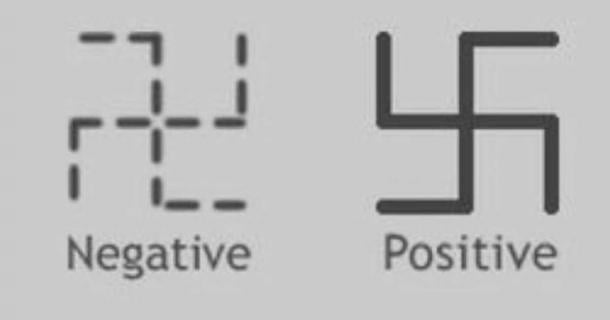
The positive and negative portrayals of the swastika symbol. (Author provided)
12,000 Years of Symbolism: The Origins of the Swastika
The earliest swastika-like shape ever found was uncovered in Mezine, Ukraine, carved on an ivory figurine which dates back an incredible 12,000 years. One of the earliest cultures that are known to have used the Swastika was a Neolithic culture in southern Europe, in the area that is now Serbia, Croatia, Bosnia and Herzegovina, known as the Vinca Culture, which dates back around 8,000 years.
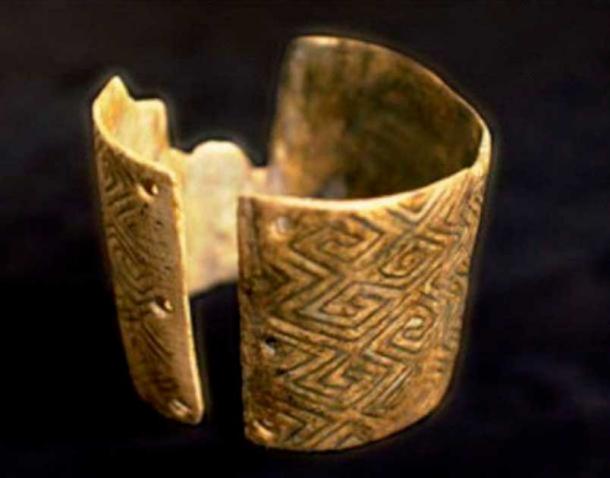
Swastika-loke pattern on a mammoth bone bracelet from Mizyn. (Encyclopedia of Ukraine)
In Buddhism, the swastika was originally a symbol of good fortune, prosperity, abundance and eternity. It is directly related to Buddha and can be found carved on statues on the soles of his feet and on his heart. It is said that it contains Buddha’s mind.
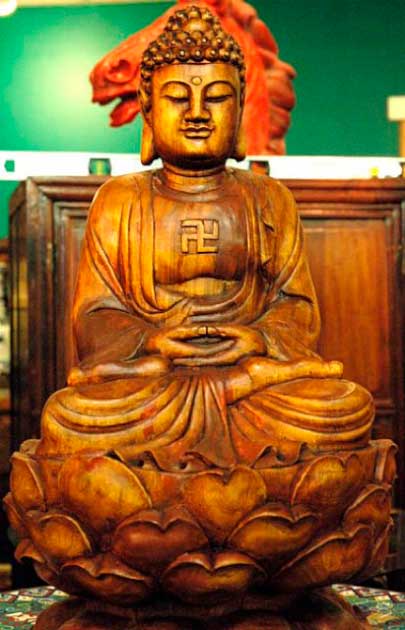
Wooden Buddha statue with gamadian (swastika). (Wonderlane / CC BY 2.0)
On the walls of the Christian catacombs in Rome, the symbol of the swastika appears next to the words ZOTIKO ZOTIKO which means “Life of Life.” It can also be found on the window openings of the mysterious Lalibela rock churches of Ethiopia, and in various other churches around the world.
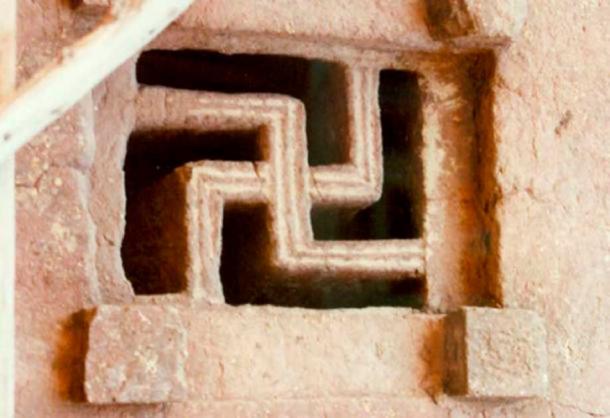
Skastika symbol in the window of Lalibela Rock hewn churches. (Sanzhab / CC BY 3.0)

Various examples of the swastika in Christian settings. (The Swastikaphobia Project)
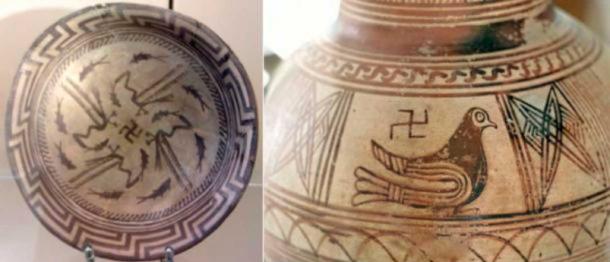
Left: The Samarra bowl at the Pergamonmuseum, Berlin. The swastika in the center of the design is a reconstruction. (Dnachmann / CC BY-SA 4.0) Right: Finding the cemetery of ancient Thera, 8th to 7th century BC. Archaeological Museum of Fira. (Zde / CC BY-SA 3.0)
In Nordic mythology, Odin is represented passing through space as a whirling disk or swastika looking down through all worlds. In North America, the swastika was used by the Navajos. In ancient Greece, Pythagoras used the swastika under the name Tetraktys and it was a symbol linking heaven and earth, with the right arm pointing to heaven and its left arm pointing to Earth. It has also been used by the Phoenicians as a symbol of the Sun and it was a sacred symbol used by the priestesses.
The symbolic swastika originated in different locations and eras. Its ancient origins throughout the ages gives rise to certain questions. How and why did so many diverse countries and cultures, across many eras, use the same symbol and apparently with the same meaning?
- Swastikas Carved at Prehistoric Sites in England by Neo-Nazi Groups that Worship Norse God Odin
- Unearthed Brooch Tells of the Nazis’ Abuse of Ancient Norse Runes to Spread Their Dark Ideology
In recent history it is ironic, and unfortunate, that a symbol of life and eternity considered sacred for thousands of years has become a symbol of hatred and disgust due to its use by the Nazi regime.
Top image: Swastika symbol decoration of clay lamps (diya) in Varanasi, India on the festival of Dev Diwali. Source: ShishirKumar / Adobe Stock
By John Black


















Comments
Could be an ancient plumbing diagram, for four families.
Nobody gets paid to tell the truth.
Represents the people spreading throughout the world out from the center the usprung. Center was the beginning of mankind, Frey and Freja. The 4 sides are the meridian lines that extended from Hell, our home.
Can someone please tell me where the swastikas are on the 12000 year old ivery because all I can see is Celtic style swirls.
Steve Greenland
Can someone please help me identify the swastikas on the piece of 12000 year old ivery? All I can see are Celtic style swirls.
Steve Greenland
With Heinrich Himmler's research into the occult I wonder if he had any influence on the Nazi adoption of the swastika, if not I wonder what he thought of it's adoption.
Pages